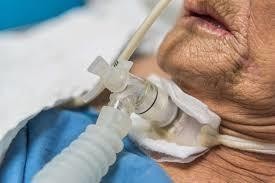The nurse is performing tracheostomy care for a client who underwent a laryngectomy for laryngeal cancer. During the procedure, the client begins to cough and is unable to clear the secretions. After the nurse suctions the airway, which finding indicates the intervention was effective?
Absence of coarse crackles.
Increase in respiratory rate.
Increase in breath sounds.
Absence of fine crackles.
The Correct Answer is A
A) Correct - The absence of coarse crackles indicates that the airway has been cleared of secretions effectively, and the lung sounds are clearer.
B) Incorrect - An increase in respiratory rate could indicate distress rather than the effectiveness of the intervention.
C) Incorrect - An increase in breath sounds may not necessarily indicate the effectiveness of the intervention, as the quality of breath sounds matters more than the increase.
D) Incorrect - The absence of fine crackles might not directly indicate the effectiveness of the intervention, as other factors can influence lung sounds.

Nursing Test Bank
Naxlex Comprehensive Predictor Exams
Related Questions
Correct Answer is D
Explanation
This is the best intervention for the PN to implement because it monitors the client's fluid status and helps detect fluid overload, which can cause hypertension and neurological changes. The PN should weigh the client at the same time, on the same scale, and with the same clothing every day.

Correct Answer is B
No explanation
Whether you are a student looking to ace your exams or a practicing nurse seeking to enhance your expertise , our nursing education contents will empower you with the confidence and competence to make a difference in the lives of patients and become a respected leader in the healthcare field.
Visit Naxlex, invest in your future and unlock endless possibilities with our unparalleled nursing education contents today
Report Wrong Answer on the Current Question
Do you disagree with the answer? If yes, what is your expected answer? Explain.
Kindly be descriptive with the issue you are facing.
